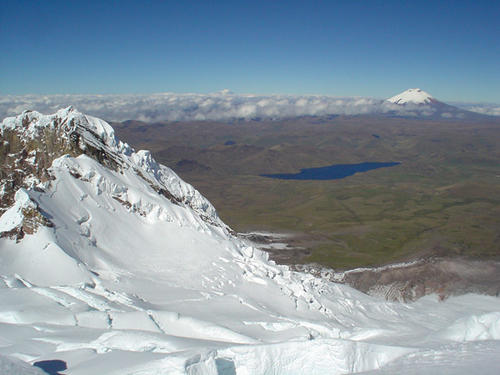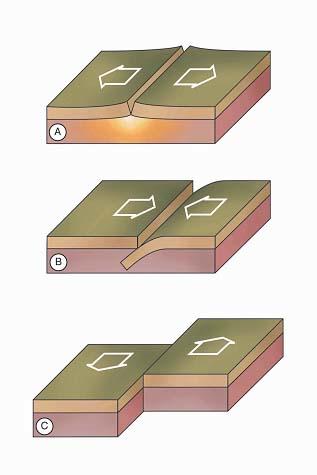Plate Boundaries
Appearance of a convergent plate boundary
Image Credit: MBG
Different types of plate boundaries
Image Credit: MBG
Types of Plate Boundaries
Plate boundaries can be categorized in three fundamental types:
(a) Divergent boundaries, where plates separate and move in opposite directions, allowing new lithosphere to form from upwelling magma. This either occurs at mid-ocean ridges (the so-called seafloor spreading) or at rifted continental margins;
(b) Convergent boundaries, where plates move towards each other. One plate either sinks beneath the other along a subduction zone or plates collide because neither can be subducted; and
(c) Transform fault boundaries, where plates move horizontally past each other.
Based on the three types of plate boundaries, a global network of approximately twelve major plates of irregular shape and size cover the Earth's crust. Where one type of plate boundary is terminated it is transformed into a boundary of a different type.

